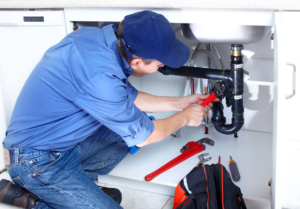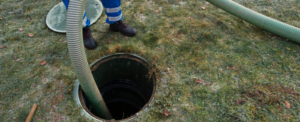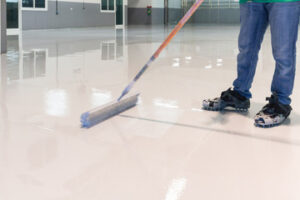Woodland Hills Plumber are most often thought of when a pipe bursts and water floods the basement or when hot water is in short supply. But plumbing is much more than that.
Plumbers also work in commercial and industrial environments, consulting blueprints and installing and maintaining piping systems. They are also involved in interpreting building codes and regulations.

Plumbers are responsible for installing, repairing and maintaining plumbing systems and fixtures. Their duties include reading and interpreting blueprints to assess or plan plumbing installations, installing and connecting pipes, appliances and fixtures such as sinks, toilets, faucets, water heaters, and irrigation systems, testing and inspecting plumbing work, ensuring proper connections and compliance with building codes, and providing customer service.
Plumbers may also be involved in the installation of new plumbing systems in construction projects, working alongside builders and architects to ensure that plumbing infrastructure is properly integrated into building designs. They must be able to identify and locate underground pipes, set up and connect septic systems, and perform other related tasks. Plumbers are often required to provide emergency plumbing services, so they must be available to work on evenings and weekends if necessary.
Problem-solving skills are essential for plumbers to have, as they must be able to analyze and troubleshoot issues with plumbing systems. They must be able to think critically and weigh different solutions when addressing problems, and they must be able to communicate clearly with customers to understand their needs and explain complicated issues in simple terms. Additional job responsibilities may include writing reports and proposals, providing recommendations for improvements to plumbing systems, and working with supervisors and other engineers to ensure that project requirements are met.
Since plumbers are frequently exposed to hazardous materials, they must follow strict safety guidelines when performing their duties. This includes wearing personal protective equipment (PPE) such as rubber gloves and face masks, using hand tools safely, and reporting any damaged or defective tools to supervisors. Plumbing is a physically demanding profession, and plumbers must be able to lift heavy objects, stand for long periods of time, and maneuver in tight spaces. They are typically required to work outdoors, but may also be called upon to work in indoor environments where there is a risk of dust or other airborne contaminants. In addition to these physical requirements, plumbing requires a high level of mental concentration and focus, as well as good manual dexterity to operate power tools and machinery.
Education and Training Requirements
In order to become a plumber, you need to have a high school diploma or equivalent and complete a plumbing apprenticeship program. Apprenticeship programs last four or five years and allow you to earn a paycheck while learning the trade. Alternatively, you can also go through an accredited vocational school to get the education and training needed to become a plumber. In addition, it is a good idea to join a professional plumbing association or group. These organizations often provide educational workshops and seminars, as well as networking opportunities.
To gain experience in the plumbing trade, you can work as an apprentice under a licensed journeyman. This will give you the hands-on knowledge and skills that you need to pass your state’s licensing exam. You can find apprenticeship opportunities through local unions, community colleges, and vocational schools. You can also visit websites that list plumbing jobs and contact companies directly to inquire about apprenticeships.
The New York State Department of Labor oversees apprenticeship programs that meet national standards. Some of these programs are registered with the United Association of Plumbers and Pipefitters, allowing you to earn nationally recognized credentials that will be valid anywhere in the country.
After completing an apprenticeship program and passing your state’s licensing exam, you can begin work as a licensed plumber. You will need to register with your municipality and obtain liability insurance before beginning work. Many states require plumbers to undergo continuing education courses to keep up with the latest techniques and safety requirements.
Service plumbers must also have excellent customer service skills. They must be able to answer questions about plumbing products and services, provide cost estimates, follow building regulations, and resolve problems quickly. Moreover, service plumbers must be able to explain technical issues in a way that customers can understand.
In addition, plumbers must be able to handle hazardous materials, such as lead and asbestos, when working on older plumbing systems. They must also be able to work in cramped spaces, stand for long periods of time, and lift heavy objects.
Licensing Requirements
There are state and city licensing requirements that must be met for a plumber. Typically, these include passing an exam and having a certain amount of experience or training. Most plumbers also must carry liability insurance, which covers property damage and personal injury caused by work performed.
A plumbing apprenticeship is a good way to gain the required experience and skills. These programs last four or five years and pay the apprentice a wage during their training. Many technical schools offer apprenticeships, as well. Some states have specific requirements for apprenticeships, including a minimum age and the completion of certain classes.
Plumbers must be able to think critically and solve problems on the job. They must be able to weigh the costs and benefits of different solutions and choose the best option for each situation. They must also be able to explain their work to customers in a clear and understandable manner. Plumbers must be physically strong enough to lift heavy tools and equipment.
Some plumbers specialize in particular types of projects or systems. For example, some may focus on installing and repairing water heaters while others might work on kitchen and bathroom renovations. Some plumbing jobs are dangerous, especially those that deal with sewage systems. These plumbers are exposed to human waste, which can contain infectious diseases such as cholera, typhoid, hepatitis, and polio. In addition, a plumber can be exposed to a variety of chemicals when working with pipes and other materials.
In order to become a licensed plumber, one must complete an apprenticeship program and pass an exam. The apprenticeship must be completed under the supervision of a master plumber. The number of years of experience needed varies by state and city. The following table shows the minimum requirements for a New York City license:
To get a journeyworker plumbing license, you must complete a four-year apprenticeship program and have 8,000 hours of experience. You can substitute directly related academic or technical training for up to 2,000 of the required experience hours. Then, you must pass a written and practical exam.
Work Environment
Plumbers must have physical stamina to carry out the tasks required of them, as well as a strong mind and technical know-how. They work in a variety of settings, both residential and commercial, and can choose to work either independently or for large companies.
In residential settings, plumbers typically perform installation and repair services for toilets, showers, sinks, bathtubs, and appliances like dishwashers and water heaters. They also lay out and install piping systems on construction sites, working alongside other tradespeople and following building blueprints to ensure that the plumbing meets structural specifications. Plumbers often have to be on call for emergency repairs, so they must be able to answer calls from home owners and tenants at all hours.
Commercial and industrial environments offer a more varied workplace for plumbers, as they can be involved in installing and maintaining larger-scale plumbing systems that provide water to multiple occupants. In these settings, they may also work on pipes that connect to HVAC equipment and fire sprinklers. This can be challenging, as it requires plumbers to collaborate with other professional tradespeople and understand how each system operates in order to properly integrate them.
Whether they work in residential, commercial, or industrial environments, all plumbers must provide their customers with outstanding service and high-quality craftsmanship. The best way to achieve this is by completing a comprehensive vocational training program that offers industry-specific education and hands-on experience. Platforms like Dreambound can help you find the right training program to get your career in plumbing off to a great start.



